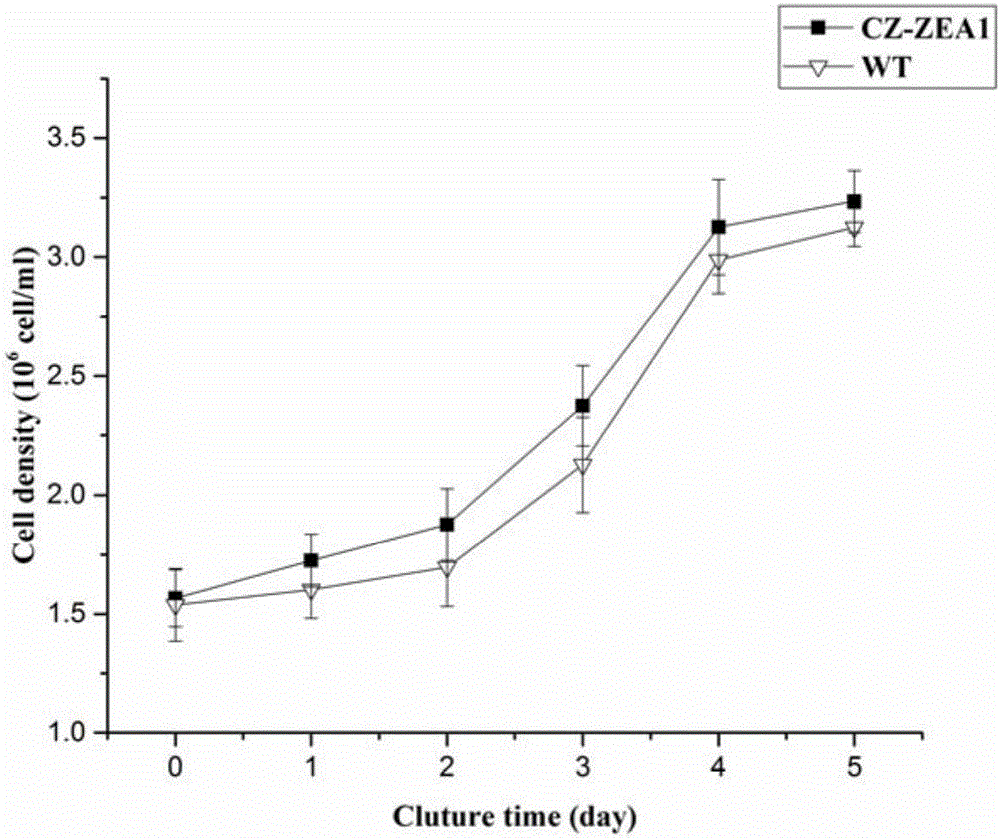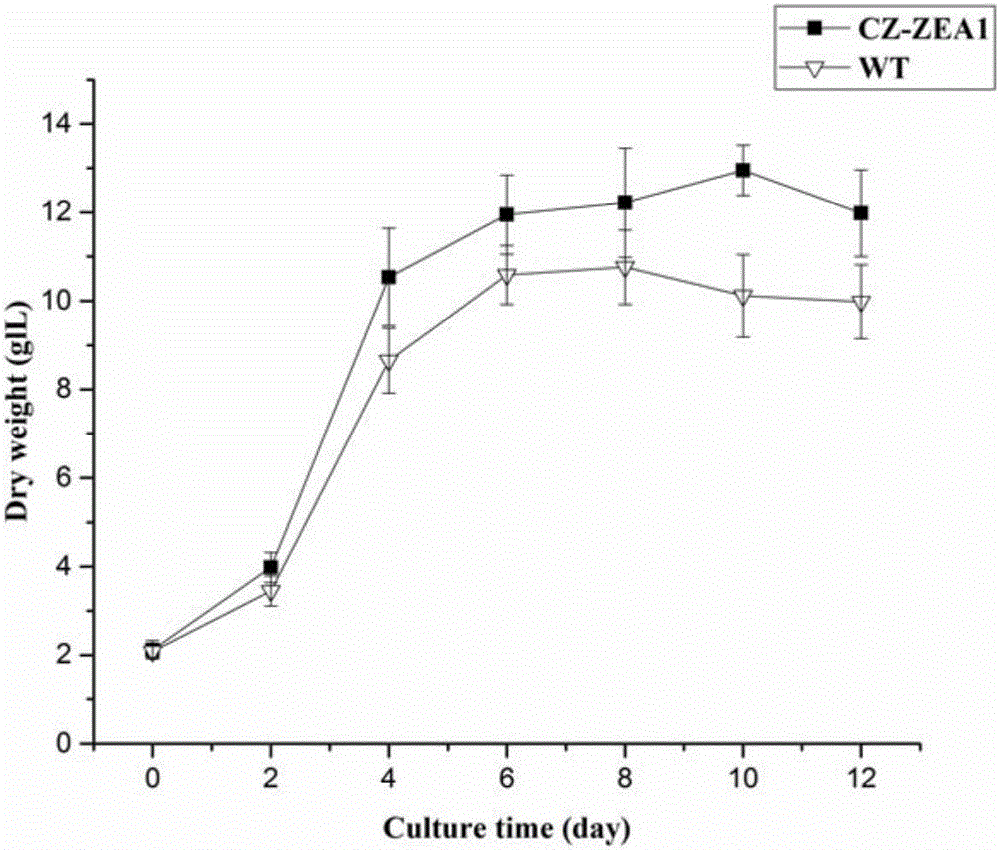Mutant chlorella strain capable of producing zeaxanthine and beta-carotene and culturing method thereof
A technology of carotene and zeaxanthin, applied in the field of microbial engineering
- Summary
- Abstract
- Description
- Claims
- Application Information
AI Technical Summary
Problems solved by technology
Method used
Image
Examples
Embodiment 1
[0038] 1) Inoculate the starting algal strain Chlorella (Chlorella zofingiensis, ATCC 30412) (American TypeCulture Collection, ATCC, Rockville, MD, USA) from Kuhl agar slant medium (containing 3g / L glucose and 1.5% agar) to Cultured for 4 days in 10ml of Kuhl's liquid medium. The culture conditions were as follows: temperature 25 degrees Celsius, shaker speed 150 rpm, light intensity 30umol m -2 the s -1 . The composition of Kuhl medium is (L): 1.01g KNO 3 ; 0.62gNaH2PO4 H2O; 0.089g Na 2 HPO 4 2H 2 O; 0.247g MgSO 4 ·7H 2 O; 14.7 mg CaCl 2 2H 2 O; 6.95 mg FeSO 4 ·7H 2 O; 0.061 mg H 3 BO 3 ; 0.169 mg MnSO 4 ·H 2 O; 0.287mg ZnSO 4 ·7H 2 O; 0.0025 mg CuSO 4 ·5H 2 O; and 0.01235mg (NH 4 ) 6 MO 7 o 24 4H 2 O; pH 6.8.
[0039] 2) Inoculate the algae cells cultured in the above bottle for 4 days into fresh 50 ml Kuhl liquid medium at a ratio of 1:10 and culture them for 4 days.
[0040] 3) Collect the algae cells after 4 days of culture in step 2) by centrifu...
PUM
 Login to View More
Login to View More Abstract
Description
Claims
Application Information
 Login to View More
Login to View More - R&D
- Intellectual Property
- Life Sciences
- Materials
- Tech Scout
- Unparalleled Data Quality
- Higher Quality Content
- 60% Fewer Hallucinations
Browse by: Latest US Patents, China's latest patents, Technical Efficacy Thesaurus, Application Domain, Technology Topic, Popular Technical Reports.
© 2025 PatSnap. All rights reserved.Legal|Privacy policy|Modern Slavery Act Transparency Statement|Sitemap|About US| Contact US: help@patsnap.com



